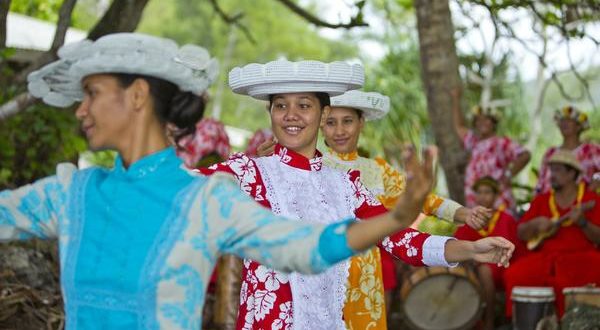[ad_1]
French Polynesia has been getting a lot of attention lately. After years of stagnation, two new carriers added nonstop flights from North America to Tahiti in 2018, returning capacity to levels not seen in more than a decade.
The influx of new flights and lower fares drew an influx of North American visitors to popular vacation spots like Moorea and Bora Bora. But those are just two destinations among the 67 inhabited islands scattered across an area of the Pacific roughly the size of Europe. A year after the increase of flights, reports coming in from some of the more remote parts of the country indicate business as usual—the additional visitors to French Polynesia aren’t coming to see them.
The good news is that these remote atolls and islands continue to offer visitors exactly what draws many of them to French Polynesia to begin with: uncrowded seclusion. Although French Polynesia’s hot spots are hardly crowded by North American standards (more visitors arrive in Hawai‘i in five days than French Polynesia sees in an entire year), here’s a list of islands and atolls to visit for a truly serene Pacific getaway.
Raivavae
Located in the Austral Islands 90 minutes from Papeete by air, Raivavae is an island surrounded by an inlet and 28 motu (low-lying reef islands), like a smaller Bora Bora. Visitors will find the diminutive “laughing” tiki, noted basket weavers and quilters of tifaifai patterns, and the “motu piscine”, a depression in the lagoon that’s like a natural ocean swimming pool.
What visitors won’t find are hotels, resorts, banks, ATMs, taxis or traffic. Join the locals in traversing the island on bicycle—a full circuit takes about two hours. The Austral Islands are just south of the Tropic of Capricorn, which makes their weather more temperate than the rest of the country—perfect for growing crops like taro, mango and coffee.
Mangareva
Even further afield than the Austral islands are the Gambiers, some four and a half hours distant from Papeete by air. Plan to spend several days, as the air connection to Tahiti is only twice a week. At more temperate latitudes like the Australs, the Gambiers are known for exceptionally lustrous, colorful pearls from oysters cultivated in the cooler waters.
The Gambiers are also known as the Cradle of Catholicism in French Polynesia, where visitors can explore ghostly abandoned convents and restored cathedrals, and poke around intimate villages with the same unspoiled character as the other remote islands of French Polynesia. Home-cooked meals served up in the local pensions (guest houses) often feature local ingredients like korori, a muscle from the pearl oyster.
Fakarava
A coral atoll with a turquoise lagoon, pink and white sand beaches, lazy palms, and virtually no people, Fakarava is the South Pacific ideal. The atoll (a coral reef with surrounding a lagoon without a central island) is also noted for crystal clear waters popular with snorkelers and divers, some of whom nickname the island “Sharkarava” for its abundance of gray and black tip shark life, in addition to manta rays, barracuda, and pristine coral.
Fakarava is part of an expansive archipelago of coral atolls called the Tuamotus, and is about an hour by air from Papeete.
Hiva Oa
One of the more populated islands in the Marquesas, Hiva Oa is perhaps the best-known island in French Polynesia outside of the Society Islands, owing its fame in no small part to the fact that both Paul Gauguin and Jacques Brel spent their terminal years there. Visitors can visit a center dedicated to both artists, poking through the hangar where Brel’s plane is stored, and explore a replica of Paul Gauguin’s luridly decorated hut aptly named Maison du Jouir.
Located nearly four hours northwest of Papeete by air (so distant that the Marquesan language is mutually unintelligible with Tahitian), Hiva Oa is an island where horses graze lazily in the middle of jungle roads without concern for vehicle traffic (there’s hardly any), and heavenly a capella choirs from the military school compete with bird calls echoing through the valleys to stir visitors from their slumbers in the dawn hours.
Maupiti
A couple clicks west of Bora Bora in the Society Islands lies Maupiti, which is almost a facsimile of the more famous island in miniature. One similarity it doesn’t share with its larger sister is development—while Bora Bora is inundated with luxury resorts, Maupiti maintains a solidly local character with just a handful of family pensions.
The island’s small size and clear, warm lagoon make kayaking and snorkeling the main attractions here. Most of the pensions will also arrange excursions to the motu for picnics or provide directions on the best path to hike Mt. Teurafaatiu for panoramic views of the island and lagoon.
Good To Know
The smaller islands in French Polynesia are still very much cash economies. Some of the pensions take credit cards, but few other businesses do. Some islands have at least one ATM but these are often unreliable—it’s best to leave Papeete with enough cash to sustain the length of your visit.
A rough command of French is helpful. Pension owners generally speak enough English to conduct business, as do many islanders who provide tourism-related services, but it’s always a good idea to begin and end conversations with pleasantries in French before inquiring whether English is spoken.
Electricity is expensive and air conditioning is rare, particularly in the cooler Australs and Gambiers.
Only satellite WiFi is available, which is typically slower, particularly during business hours when commercial traffic takes up bandwidth.
For more information on visiting French Polynesia, visit Tahiti Tourisme.
[ad_2]You can read more of the news on source
 Travelsmart
Travelsmart



